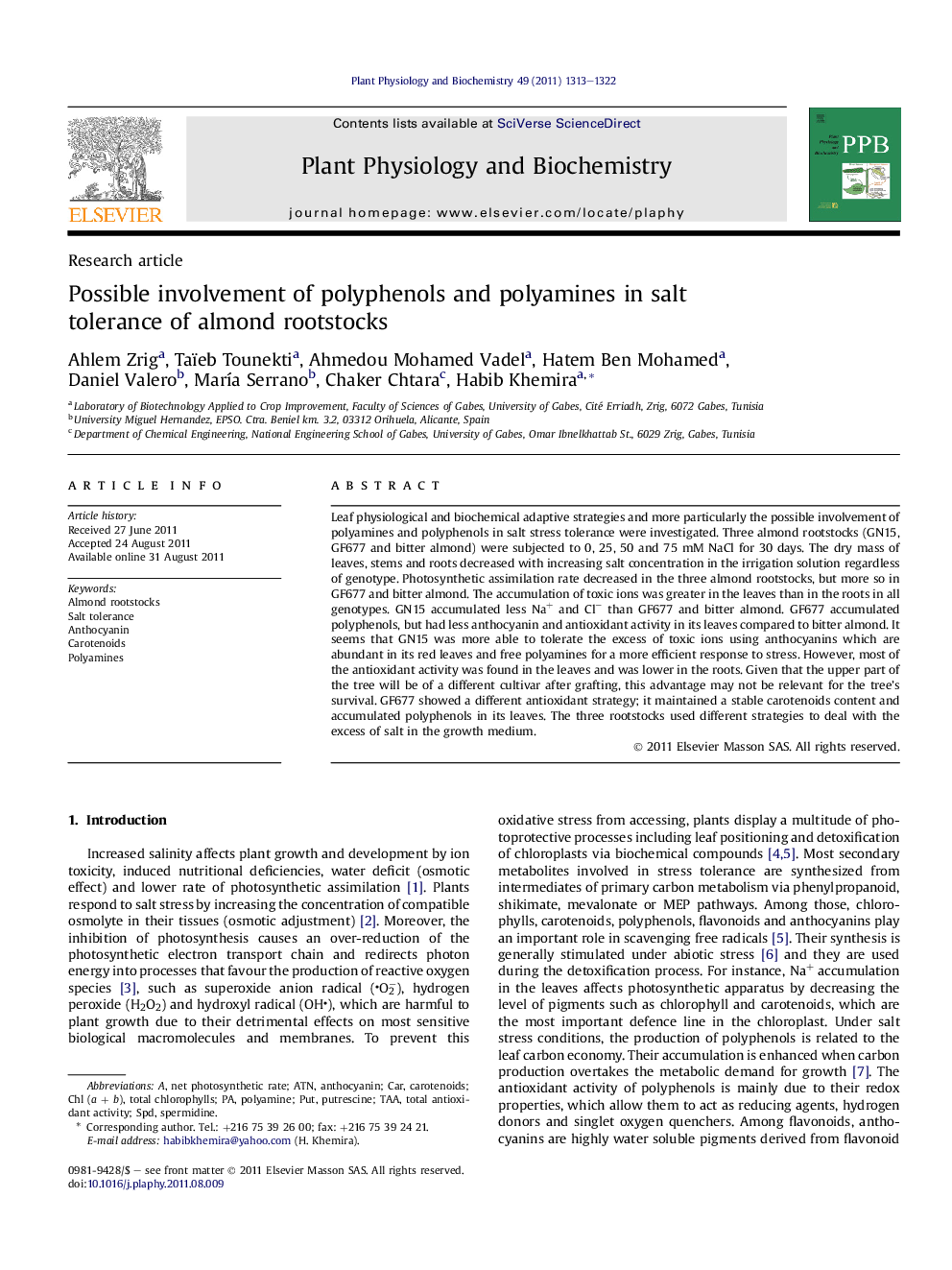| Article ID | Journal | Published Year | Pages | File Type |
|---|---|---|---|---|
| 2015240 | Plant Physiology and Biochemistry | 2011 | 10 Pages |
Leaf physiological and biochemical adaptive strategies and more particularly the possible involvement of polyamines and polyphenols in salt stress tolerance were investigated. Three almond rootstocks (GN15, GF677 and bitter almond) were subjected to 0, 25, 50 and 75 mM NaCl for 30 days. The dry mass of leaves, stems and roots decreased with increasing salt concentration in the irrigation solution regardless of genotype. Photosynthetic assimilation rate decreased in the three almond rootstocks, but more so in GF677 and bitter almond. The accumulation of toxic ions was greater in the leaves than in the roots in all genotypes. GN15 accumulated less Na+ and Cl− than GF677 and bitter almond. GF677 accumulated polyphenols, but had less anthocyanin and antioxidant activity in its leaves compared to bitter almond. It seems that GN15 was more able to tolerate the excess of toxic ions using anthocyanins which are abundant in its red leaves and free polyamines for a more efficient response to stress. However, most of the antioxidant activity was found in the leaves and was lower in the roots. Given that the upper part of the tree will be of a different cultivar after grafting, this advantage may not be relevant for the tree’s survival. GF677 showed a different antioxidant strategy; it maintained a stable carotenoids content and accumulated polyphenols in its leaves. The three rootstocks used different strategies to deal with the excess of salt in the growth medium.
► The almond rootstocks GF677, GN15 and Bitter almond evolved different strategies to overcome soil salinity. ► Polyphenols and polyamine play an important physiological role in almond rootstocks against salt stress. ► The hybrid GN15 was able to overcome salt toxicity using anthocyanin and frees polyamines. ► Bitter almond showed a slightly strategy to deal with excessive salinity.
